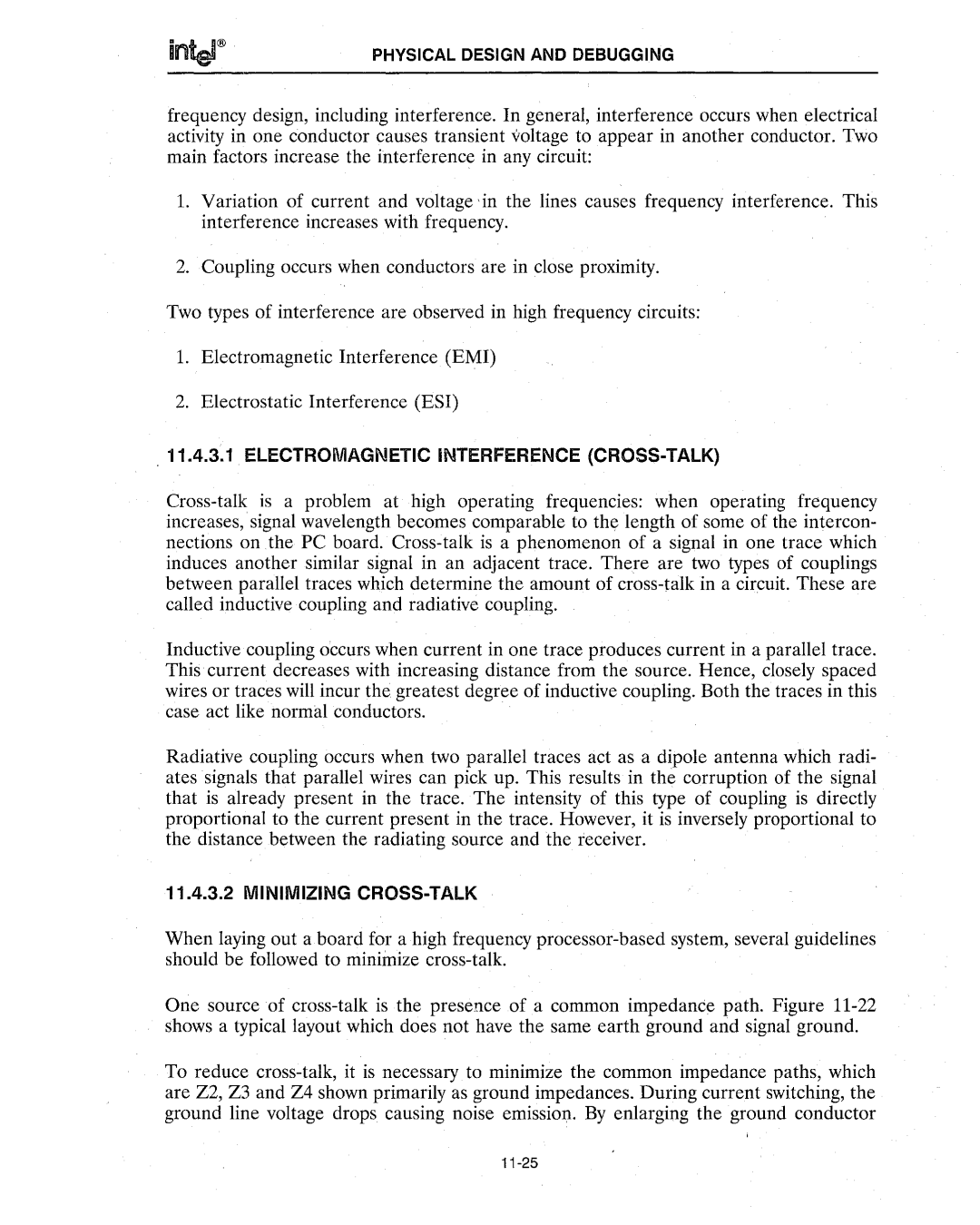
PHYSICAL DESIGN AND DEBUGGING
frequency design, including interference. In general, interference occurs when electrical activity in one conductor causes transient voltage to appear in another conductor. Two main factors increase the interference in any circuit:
1.Variation of current and voltage ,in the lines causes frequency interference. This interference increases with frequency.
2.Coupling occurs when conductors are in close proximity.
Two types of interference are observed in high frequency circuits:
1.Electromagnetic Interference (EMI)
2.Electrostatic Interference (ESI)
.11.4.3.1 ELECTROMAGNETIC INTERFERENCE (CROSS-TALK)
Inductive coupling occurs when current in one trace produces current in a parallel trace. This current decreases with increasing distance from the source. Hence, closely spaced wires or traces will incur the greatest degree of inductive coupling. Both the traces in this case act like normal conductors.
Radiative coupling occurs when two parallel traces act as a dipole antenna which radi- ates signals that parallel wires can pick up. This results in the corruption of the signal that is already present in the trace. The intensity of this type of coupling is directly proportional to the current present in the trace. However, it is inversely proportional to the distance between the radiating source and the receiver.
11.4.3.2 MINIMIZING CROSS-TALK
When laying out a board for a high frequency
One source of
To reduce
